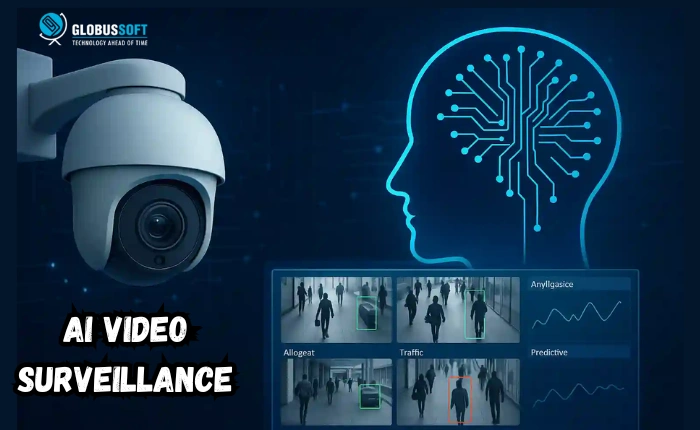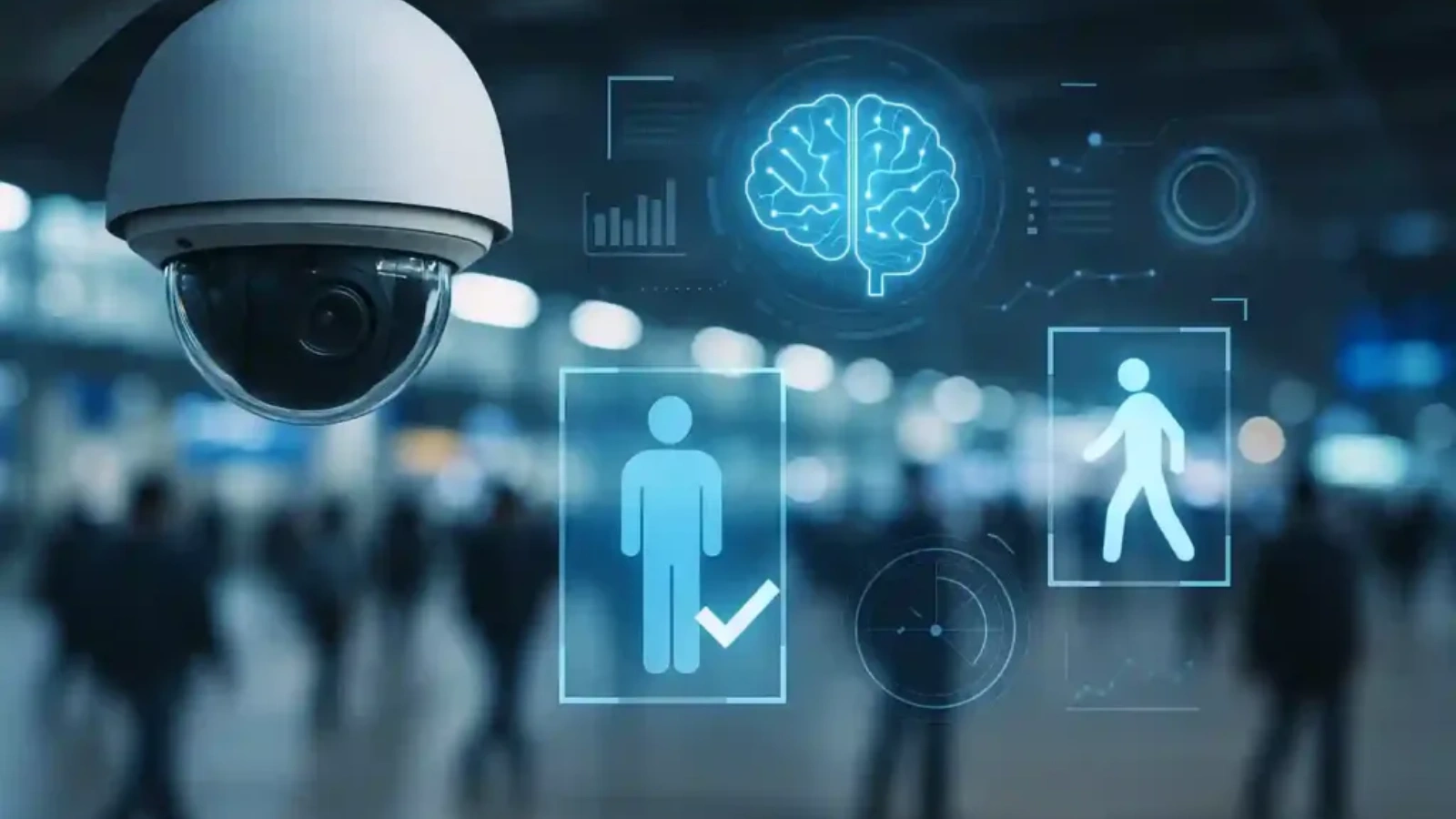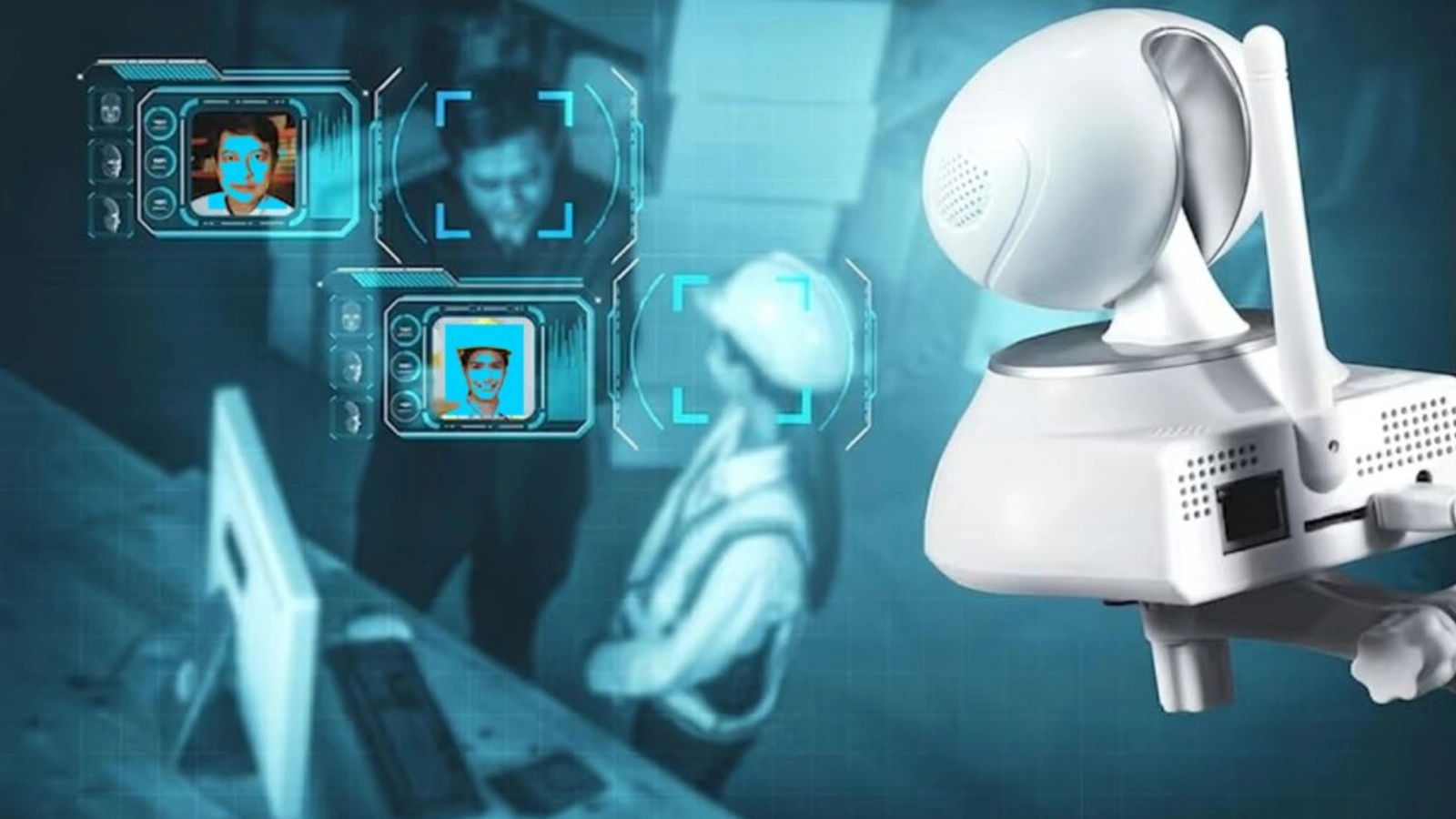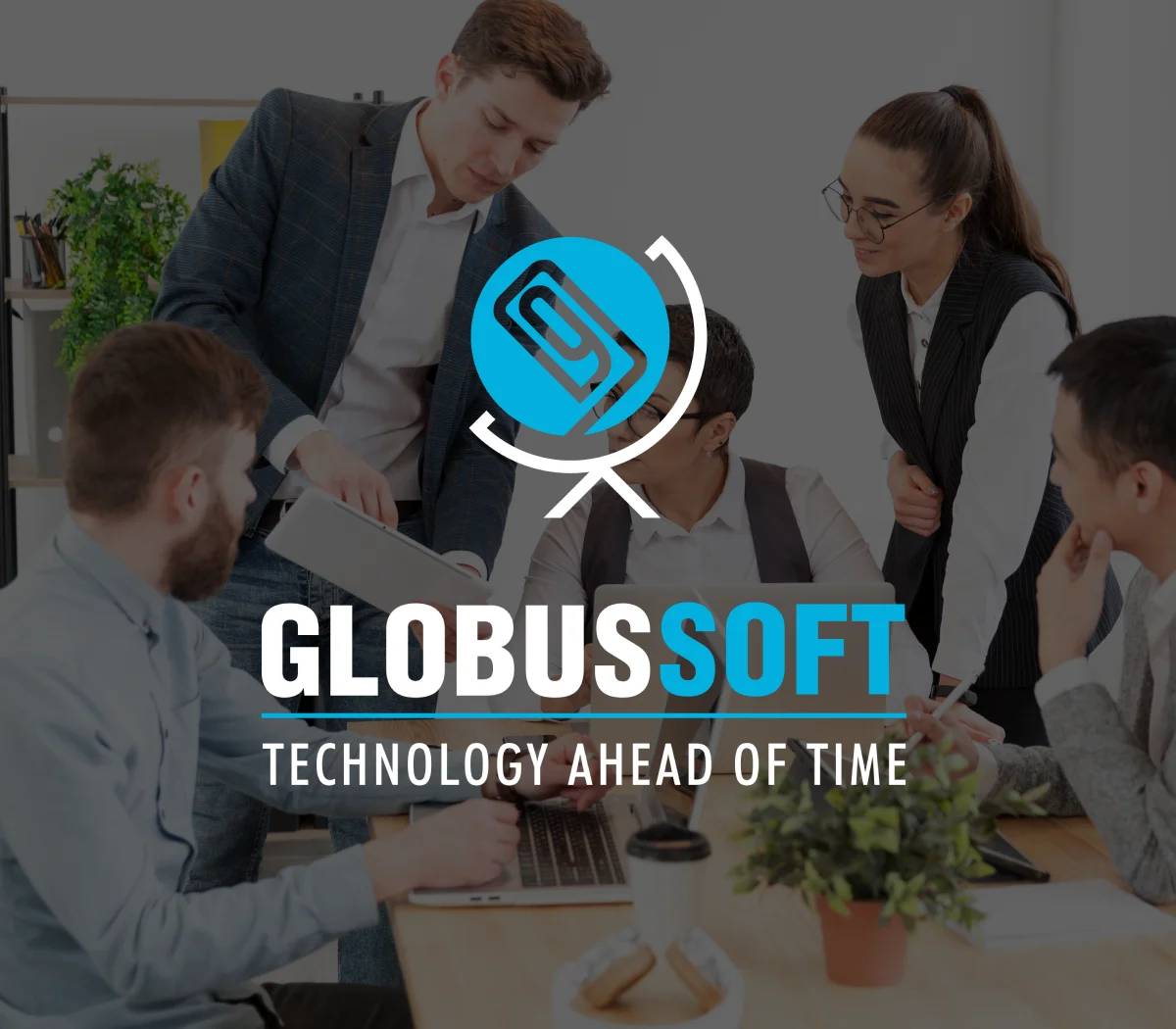
Security systems have come a long way from simply recording events. AI video surveillance is now transforming the way businesses, institutions, and individuals protect people and assets. By combining smart algorithms with advanced cameras, these systems don’t just watch, they analyze, detect, and respond in real time. From office buildings to retail stores and critical infrastructure to smart cities, AI video surveillance is raising the bar for safety and operational efficiency.
In this blog, we’ll dive into how AI-powered video monitoring works, the advantages it offers, emerging trends, and real-world applications that show why this technology is becoming essential for modern security.
Hit ‘Play’ Button & Tune Into The Blog!
Understanding AI Video Surveillance
AI video surveillance refers to security systems that combine artificial intelligence with traditional CCTV networks. Unlike conventional cameras that merely record footage, AI-enhanced systems can analyze real-time video feeds, detect anomalies, and alert relevant authorities automatically.
These systems rely on machine learning algorithms, computer vision, and data analytics, often delivered through AI as a Service platforms. They are capable of recognizing faces, identifying suspicious activities, detecting unauthorized access, and even distinguishing between humans, vehicles, and other objects.
This level of intelligence transforms how security personnel respond to potential threats, significantly reducing response time and improving safety outcomes.
How AI Video Surveillance Works?
AI video surveillance combines several advanced technologies to create a smart and proactive monitoring system. Here’s a closer look at how it functions:
1. Computer Vision:
Computer vision allows the system to “see” and interpret visual data just like a human would, but faster and more accurately. Cameras capture live video, and AI algorithms analyze each frame to detect objects, people, or unusual behavior.
This includes identifying faces, distinguishing between humans and vehicles, and recognizing specific actions such as loitering or trespassing.
2. Machine Learning:
Machine learning enables AI systems to continuously improve over time. By training on large datasets, these models learn to detect patterns, predict potential threats, and reduce false alarms.
For example, the system can differentiate between normal movements in a workplace and suspicious activities that might indicate security risks.
3. Real-Time Alerts:
One of the biggest advantages of these systems is the ability to respond immediately. When a potential threat is detected, the system sends instant notifications to security personnel or connected devices.
This real-time alerting reduces response time, prevents incidents from escalating, and can even trigger automated safety measures like alarms or lockdowns.
4. Data Analytics:
AI video systems do more than just monitor; they analyze. By processing vast amounts of footage, they provide actionable insights such as traffic patterns, crowd density, employee movement, or recurring security issues.
These insights help businesses optimize operations, improve safety protocols, and make informed decisions for both security and efficiency.
By combining computer vision, machine learning, real-time alerts, and data analytics, AI video surveillance turns traditional CCTV setups into intelligent, proactive security networks that do more than just watch; they anticipate, alert, and protect.
Also Read:
AI as a Service Solutions: Unlocking Business Potential
Key Advantages Of AI Video Surveillance
Businesses and organizations are increasingly adopting these systems because of their numerous benefits:
1. Enhanced Threat Detection:
AI-powered cameras can identify potential threats more accurately than humans. For instance, intrusion detection systems can alert security personnel when someone enters a restricted area, even in low-light conditions.
2. Reduced Human Error:
Manual monitoring can be exhausting and prone to mistakes. AI eliminates this risk by continuously analyzing video feeds without fatigue, ensuring constant vigilance.
3. Real-Time Response:
AI-enabled systems can notify authorities instantly when anomalies are detected, allowing for faster interventions and minimizing potential damages.
4. Operational Insights:
Apart from security, AI video surveillance provides valuable operational insights. Businesses can track foot traffic, monitor employee efficiency, and optimize space usage.
5. Cost-Effectiveness:
While AI systems require an initial investment, they significantly reduce long-term costs associated with security personnel, theft, and loss prevention.
6. Scalability:
AI video systems can easily scale to cover large premises, multiple locations, and complex environments without compromising performance.
The Role Of Video Surveillance Technology In Modern Security
Video surveillance technology has evolved rapidly over the past decade. Today, AI integration makes these systems not just recorders of events but intelligent platforms that enhance security intelligence.
Modern AI-powered CCTV systems can integrate seamlessly with other technologies such as access control, alarms, and IoT devices. For businesses, this means a holistic security approach that proactively detects threats, mitigates risks, and ensures compliance with safety regulations.
What Are The Emerging Trends In AI Video Surveillance?
The field of AI video surveillance is constantly evolving. Some of the latest trends include:
Facial Recognition: Advanced algorithms allow security systems to identify individuals in real-time, whether for access control, attendance tracking, or threat prevention.
Behavioral Analysis: AI systems can learn and identify unusual behavior patterns, flagging potential security risks before they escalate.
Cloud-Based Solutions: Cloud storage and processing enable scalable AI surveillance, providing secure access to footage from anywhere in the world.
Integration with Smart City Infrastructure: AI video systems are increasingly being integrated into urban planning, helping manage traffic, monitor public spaces, and ensure citizen safety.
AI-Powered Analytics: Advanced AI analytics help organizations gain actionable insights from their surveillance footage, improving decision-making and operational efficiency.
Solutions such as VideoraIQ by Globussoft equip you with powerful AI productivity tools and surveillance capabilities to manage security effectively and protect your people and assets from potential harm.
How Does An AI CCTV System Take Security To The Next Level?
A modern AI CCTV system is far more advanced than conventional cameras. By combining intelligent algorithms with high-definition video feeds, these systems provide a multi-layered approach to security. Key features include:
- Real-time monitoring with automated alerts
- Object, face, and license plate recognition
- Detection of unusual behavior or loitering
- Integration with alarms, access control, and other security systems
- Data-driven insights for operational improvement
The adoption of AI CCTV systems ensures that organizations are not just reacting to incidents but anticipating and preventing them proactively.
How Is AI Video Surveillance Transforming Different Industries?
The application of AI video surveillance is widespread, with industries leveraging the technology to enhance safety, efficiency, and compliance.
1. Retail:
Retailers use AI surveillance to monitor customer behavior, prevent theft, and optimize store layouts. Advanced analytics help in understanding shopping patterns and improving sales strategies.
2. Corporate Offices:
AI CCTV systems ensure workplace safety, monitor access control, and provide data-driven insights into employee movement and productivity.
3. Healthcare:
Hospitals and clinics utilize AI surveillance to safeguard patients, monitor critical areas, and manage sensitive zones with minimal human intervention.
4. Transportation:
Airports, railway stations, and bus terminals leverage AI video systems for crowd management, vehicle tracking, and security threat detection.
5. Smart Cities:
City planners use AI surveillance to manage traffic flow, monitor public spaces, detect crimes, and ensure citizen safety efficiently.
6. Industrial Facilities:
Factories and warehouses deploy AI video systems to monitor equipment, ensure worker safety, and prevent unauthorized access.
Also Read:
How To Use AI Productivity Tools To Work Smarter?
The Future Of AI Video Surveillance
The future of these systems is bright and dynamic. Key developments expected in the coming years include:
- Advanced behavioral prediction models
- Seamless integration with IoT and smart city technologies
- AI-powered video intelligence software with enhanced analytics
- Predictive security systems that anticipate threats before they occur
As AI continues to evolve, surveillance systems will become increasingly proactive, intelligent, and indispensable for businesses and governments alike.
How Can CCTV AI Video Analytics Unlock Operational Intelligence?
Modern cctv ai video analytics extends beyond traditional security. By leveraging AI algorithms, these systems can generate insights about operational efficiency, customer behavior, and potential risks. This data-driven approach transforms surveillance from a passive monitoring tool into an active intelligence platform.
Organizations can:
- Analyze foot traffic and customer behavior
- Monitor employee performance and workflow efficiency
- Identify bottlenecks and safety risks
- Reduce costs through predictive insights
This convergence of AI, analytics, and video surveillance is redefining how businesses approach security and operations.
Challenges In AI Video Surveillance
While the benefits are significant, there are challenges to consider:
- Data Privacy: Organizations must balance surveillance with privacy regulations, ensuring compliance with laws such as GDPR.
- High Initial Investment: AI systems can be costly to implement initially, though the long-term benefits often outweigh these costs.
- Technical Expertise: Proper installation, maintenance, and monitoring require skilled personnel or reliable AI software platforms.
- Integration Complexity: Combining AI video surveillance with existing infrastructure can be challenging but is manageable with solutions like VideoraIQ.
How To Choose The Right AI Video Surveillance System?
Selecting the right AI video surveillance system requires careful planning to ensure it meets your security needs and business goals. Key considerations include:
- Coverage Area and Number of Cameras: Ensure the system can monitor all critical areas effectively without blind spots.
- AI Features Needed: Determine which features are essential, such as face recognition, intrusion detection, license plate recognition, or behavioral analysis.
- Integration with Existing Security Systems: Check if the system can work seamlessly with your current alarms, access control, or monitoring infrastructure.
- Cloud vs. On-Premise Storage: Decide whether cloud-based solutions or local storage best suit your needs for accessibility, security, and scalability.
- Cost and Scalability: Choose a system that fits your budget while allowing for future expansion as your requirements grow.
Solutions like VideoraIQ, a powerful video intelligence software from Globussoft, make this process easier. With features such as real-time analytics, automated alerts, and intelligent monitoring, VideoraIQ helps organizations enhance security, streamline operations, and make data-driven decisions efficiently.
VideoraIQ: Smart AI Video Intelligence Software

One of Globussoft’s flagship products, VideoraIQ, perfectly exemplifies the power of AI in video surveillance. This cloud-based, AI-powered platform transforms traditional CCTV networks into proactive security solutions.
Key features of VideoraIQ include:
- Face Recognition: Identifies individuals in real-time, supporting secure access, attendance tracking, and threat prevention.
- Intrusion Detection: Flags unauthorized entry instantly, enabling faster responses.
- Object Detection: Differentiates people, vehicles, and other objects to minimize false alarms.
- License Plate Recognition: Automates vehicle identification, useful for parking and traffic management.
- Fire and Smoke Detection: Provides early alerts to prevent potential disasters.
- Unauthorized Access Alerts: Ensures continuous monitoring and immediate action in case of breaches.
By implementing VideoraIQ, organizations can enhance security, gain real-time operational insights, and elevate their surveillance systems from passive monitoring to intelligent, proactive protection.
Benefits Of VideoraIQ For Businesses
By integrating VideoraIQ, organizations can achieve:
- Enhanced security through real-time AI monitoring
- Reduced reliance on manual surveillance
- Faster response to threats and emergencies
- Operational insights through advanced analytics
- Seamless integration with existing security infrastructure
This product aligns perfectly with the broader goals of AI video surveillance, making it an indispensable tool for modern security management.
Conclusion
AI video surveillance is no longer a futuristic concept, it is the present of intelligent security management. By combining AI, machine learning, and advanced video analytics, businesses and organizations can protect assets, enhance operational efficiency, and make data-driven decisions.
Platforms like Globussoft, with their innovative product VideoraIQ, demonstrate how AI can transform traditional CCTV systems into intelligent, proactive, and scalable security solutions. From face recognition to intrusion detection, fire alerts, and operational analytics, AI video systems are redefining the standards of modern surveillance.
As technology continues to evolve, embracing AI video surveillance is essential for organizations that aim to stay ahead in security, operational efficiency, and intelligent decision-making. With the right tools and strategies, the future of surveillance is not just watching, it’s thinking, predicting, and acting.
FAQs
1. Can AI video surveillance systems work in low-light or night time conditions?
Yes. Modern AI video surveillance cameras often come with infrared, thermal imaging, or low-light enhancement features. These technologies allow the system to detect and analyze activity accurately even in dark environments, ensuring 24/7 security coverage.
2. How does AI video surveillance help with compliance and regulatory requirements?
AI-powered systems can automatically log events, monitor restricted areas, and generate detailed reports. This makes it easier for organizations to comply with safety, privacy, and security regulations, reducing risks of fines or legal issues.
3. Is AI video surveillance suitable for small businesses, or is it only for large enterprises?
AI video surveillance is scalable and can benefit organizations of all sizes. Cloud-based and modular solutions allow small businesses to implement intelligent monitoring without the high costs of traditional security systems.








